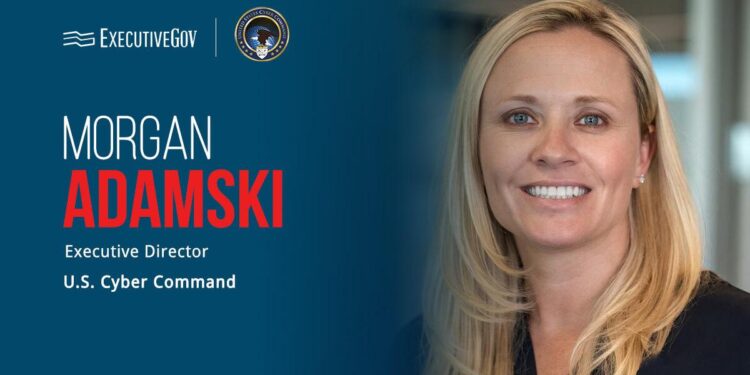In a bold move reflecting the ever-evolving landscape of digital security, PwC has announced the appointment of Morgan Adamski to spearhead its newly established Cyber, Data & Technology Risk division. As cyber threats grow increasingly sophisticated and data governance becomes paramount, Adamski’s expertise positions PwC at the forefront of protecting clients against emerging risks. This strategic addition marks a significant milestone in the firm’s commitment to innovation and resilience in the face of technological challenges.
Morgan Adamski Strengthens PwC’s Cybersecurity Leadership with New Role
Morgan Adamski steps into a pivotal role at PwC, spearheading the firm’s newly established Cyber, Data & Technology Risk division. With an extensive background in safeguarding enterprise infrastructures and a forward-thinking approach to cybersecurity, Morgan is set to enhance PwC’s strategic capabilities amid a rapidly evolving digital threat landscape. Her leadership will focus on integrating innovative risk management practices that address the complexities of today’s data-driven world, empowering clients to stay resilient against cyber threats while navigating regulatory demands.
Under Morgan’s guidance, the division will prioritize key initiatives that include:
- Advanced Threat Intelligence: Leveraging real-time analytics to preemptively identify and counteract cyberattacks.
- Data Privacy & Compliance: Ensuring aligned frameworks with global privacy laws and standards.
- Technology Risk Assessment: Comprehensive evaluation of emerging technologies to minimize vulnerabilities.
- Workforce Cyber Readiness: Elevating organizational culture and employee awareness around cyber hygiene.
| Focus Area | Objective | Impact | |||||||||||||||||||||||
|---|---|---|---|---|---|---|---|---|---|---|---|---|---|---|---|---|---|---|---|---|---|---|---|---|---|
| Threat Intelligence | Proactive detection | Reduced incident response time | |||||||||||||||||||||||
| Data Compliance | Regulatory alignment | Minimized legal risks | |||||||||||||||||||||||
| Risk Assessment | V It appears the last table row is truncated. Based on the content so far, here is a clean summary and completed version of the table I can provide for you:
Summary: Morgan Adamski has taken on a leading role at PwC to head the new Cyber, Data & Technology Risk division. With her expertise, the division will focus on integrating innovative cybersecurity risk management approaches, helping clients remain resilient against evolving cyber threats while meeting regulatory requirements. Key initiatives include advanced threat intelligence, data privacy and compliance, technology risk assessment, and workforce cyber readiness. Completed Table: | Focus Area | Objective | Impact | If you want, I can also help draft a continuation of the truncated paragraph or convert this into another format. Just let me know! Exploring the Impact of PwC’s Cyber Data and Technology Risk Division on Industry StandardsPwC’s Cyber, Data & Technology Risk Division is swiftly becoming a pivotal force in redefining industry benchmarks for cybersecurity and data governance. By integrating cutting-edge technological solutions with a deep understanding of regulatory frameworks, the division champions an innovative approach that empowers organizations to not only anticipate evolving threats but also to build inherently resilient infrastructures. Their commitment to embedding security into the very fabric of business operations ensures that risk management moves beyond reactive measures to proactive strategy. Central to their influence is a holistic focus characterized by:
Strategic Recommendations for Organizations Navigating Emerging Cyber and Data RisksTo effectively confront the rapidly evolving landscape of cyber and data risks, organizations must embrace a proactive and adaptive security posture. This involves integrating continuous risk assessments with real-time threat intelligence to anticipate vulnerabilities before they surface. A culture that prioritizes cybersecurity awareness at every organizational level fosters resilience and empowers employees to become the first line of defense. Incorporating advanced analytics and artificial intelligence tools can further augment detection capabilities, enabling swift identification and mitigation of sophisticated cyber threats. Moreover, strategic collaboration across departments and external partners enhances an organization’s ability to respond decisively to emerging challenges. Leaders should focus on developing comprehensive incident response plans that are regularly updated and stress-tested through simulations. Key recommendations include:
|































